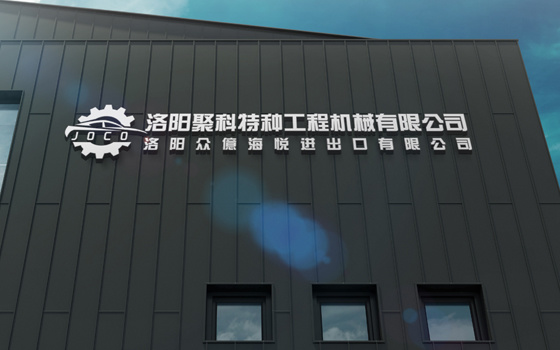Fourteen Common Problems in Construction Machinery Maintenance
2024-11-13

Maintenance is an effective means to restore the technical performance of construction machinery, eliminate faults and hidden dangers, and extend the service life of the machinery. Currently, the domestic automotive repair industry has reached a considerable scale, while the construction machinery repair industry started relatively late and still faces many technical issues during maintenance. The existence of these problems leads to low maintenance quality, poor equipment reliability, causing consumers to suffer losses and even resulting in major construction machinery accidents. This article briefly analyzes common technical problems encountered in construction machinery maintenance, aiming to draw the attention of relevant personnel.
1. The inability to correctly judge and analyze faults, with the phenomenon of blindly disassembling machinery being commonplace.
Some maintenance personnel, due to a lack of understanding of the structure and principles of construction machinery, do not seriously analyze the causes of faults and cannot accurately determine the fault location. They blindly disassemble the machinery based on a vague understanding, resulting in not only the original fault remaining unresolved but also new problems arising due to poor maintenance skills and techniques. Therefore, when machinery malfunctions, it is essential to use testing equipment for diagnosis. If no testing equipment is available, traditional fault diagnosis methods such as 'asking, observing, checking, and testing' should be employed, combined with the structure and working principles of the construction machinery to identify the most likely fault location. Common methods for determining faults in construction machinery include the 'elimination method' and 'comparison method,' following a sequence from simple to complex, from external to internal, and from assemblies to components, avoiding the practice of 'blindly disassembling without understanding the situation.'
2. The phenomenon of blindly replacing components and a one-size-fits-all approach to repairs exists to varying degrees.
Judging and eliminating faults in construction machinery can be relatively difficult. Some maintenance personnel consistently adopt the method of replacing parts for testing, regardless of whether the parts are large or small. As long as they believe a component might be causing the fault, they replace it one by one, resulting in not only the fault remaining unresolved but also the unnecessary replacement of components that should not have been changed, increasing costs for consumers. Additionally, some faulty components can be restored to their technical performance through repair without complex repair processes, yet maintenance personnel insist on replacing them with new parts, leading to significant waste. The aforementioned practices of blind replacement and the indiscriminate replacement of repairable parts still exist to varying degrees in some repair units. During maintenance, it is crucial to carefully analyze and determine the causes and locations of faults based on the symptoms, and to restore the technical performance of repairable components through repair methods, thereby eliminating the practice of blind replacement.
3. The issue of not checking the quality of new parts, leading to faults after assembly, is quite common.
Before replacing parts, some maintenance personnel do not conduct technical inspections of new parts and directly install them onto the construction machinery. This practice is unscientific. Currently, the quality of spare parts sold in the market varies greatly, with some counterfeit and inferior parts mixed in; additionally, some parts may have changed in performance due to prolonged storage. If not tested, they often lead to faults after assembly. It is essential to conduct necessary inspections and tests before replacing new parts, including appearance and performance tests, to ensure that new parts are fault-free and to avoid unnecessary troubles.
4. The phenomenon of not paying attention to part models, with the use of substitute or incorrect parts being quite common.
When maintaining construction machinery, the use of substitute or incorrect parts is still quite prevalent. While some emergency substitutions of parts are feasible, long-term use can be harmful rather than beneficial, affecting the safety and technical performance of the machinery. Some maintenance personnel have limited understanding of the machinery's structure and principles, and many spare parts do not match the required models, yet they believe that as long as the parts can be installed, it is acceptable, without considering whether they can perform the machinery's technical functions. Therefore, when maintaining construction machinery, it is advisable to use original model parts as much as possible and to avoid substituting with parts of other models or using them incorrectly.
5. The issue of not paying attention to the selection of bolts, with chaotic use of bolts being quite prominent.
During the maintenance of construction machinery, the chaotic use of bolts is still quite prominent. Due to the performance and quality of bolts not meeting technical requirements, machinery frequently malfunctions after maintenance. The specialized bolts used in construction machinery, such as drive shaft bolts, cylinder head bolts, connecting rod bolts, flywheel bolts, and injector fixing bolts, are made from special materials and processed in a specific way, ensuring high strength and shear resistance for reliable connections and fixations. In actual maintenance operations, when some maintenance personnel find these bolts damaged or missing, they may not find standard bolts immediately and may randomly use other bolts as substitutes or process their own replacements. These bolts, due to poor material or substandard processing, leave hidden faults for the later use of the construction machinery. Some areas require 'fine pitch' self-locking bolts, copper bolts, or copper-plated bolts, yet ordinary bolts are used instead, leading to issues such as bolts loosening on their own or being difficult to disassemble. Some bolts may stretch or deform after use, and some technical requirements specify that bolts must be replaced after a certain number of disassemblies. Due to maintenance personnel's lack of understanding of these situations, repeatedly using unqualified bolts can easily lead to machinery faults or accidents. Therefore, during the maintenance of construction machinery, when bolts are damaged or lost, it is essential to promptly replace them with compliant bolts and avoid chaotic use.
6. The situation of improper bolt tightening methods is quite serious.
Most fixed or connecting bolts in various parts of construction machinery have specific torque requirements, such as injector fixing bolts, cylinder head bolts, connecting rod bolts, and flywheel bolts. Some specify tightening torque, while others specify tightening angles and sequences. Some maintenance personnel believe that tightening bolts is a simple task that anyone can do and is not important, thus they do not follow the specified torque and sequence (some are completely unaware of the torque and sequence requirements), do not use torque wrenches, or randomly use leverage bars, tightening by feel, leading to significant discrepancies in tightening torque. Insufficient torque can cause bolts to loosen, leading to damage to cylinder gaskets, loosened bearings, oil leaks, and air leaks; excessive torque can cause bolts to stretch, deform, or even break, sometimes damaging threaded holes and affecting repair quality. Therefore, during the maintenance of construction machinery, it is crucial to tighten bolts according to the specified torque and sequence to prevent machinery faults caused by improper bolt tightening.
7. The phenomenon of not paying attention to the detection of component fit gaps is quite common.
The fit gaps between the piston and cylinder sleeve of diesel engines, the 'three gaps' of piston rings, piston top gaps, valve gaps, plunger residual gaps, brake shoe gaps, meshing gaps of driving and driven gears, axial and radial gaps of bearings, and the fit gaps between valve stems and valve guides all have strict requirements for various machine types. During maintenance, measurements must be taken, and components that do not meet the gap requirements must be adjusted.
Related Blog
Contact Us
E-mail:
953081231@qq.com
Telephone:
+8615037966987
Address:
East section of Luoxin Industrial Park, Luoyang City, Henan Province







